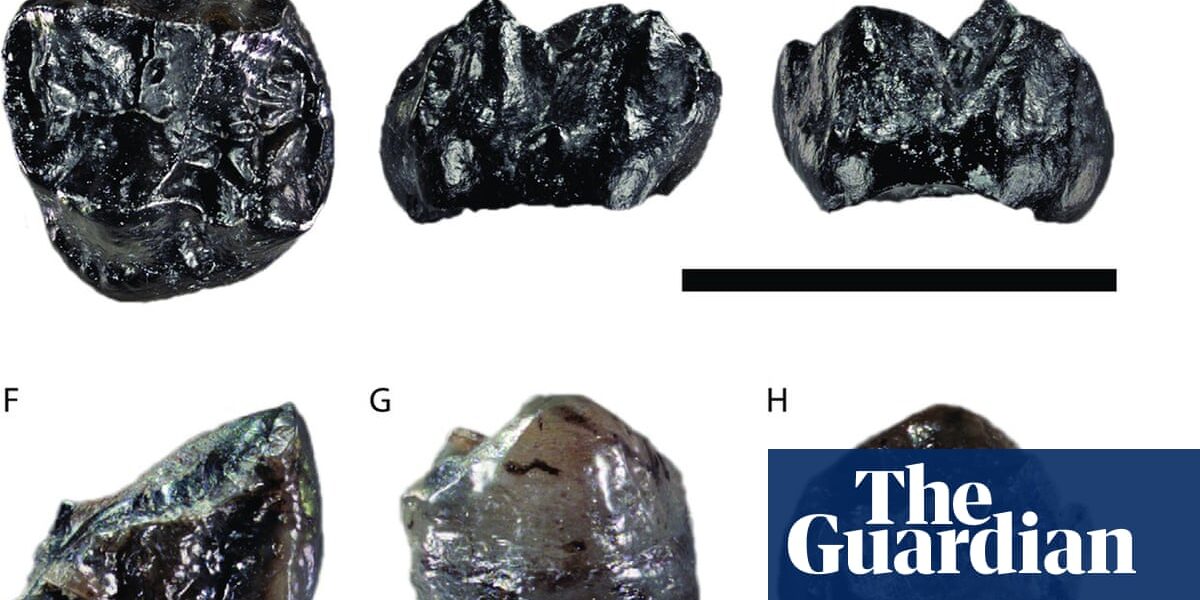
The smallest known great ape has been discovered in Germany, dating to 11m years ago.
The tiny creature, far smaller than any other great ape on record, is estimated to have weighed 10kg (1st 8lbs), about the size of a human toddler. The species, called Buronius manfredschmidi, is an ancient hominid, part of the ancestral family that gave rise to modern humans, gorillas and chimpanzees.
“This new genus is far smaller than any living or any fossil hominid,” said Prof Madelaine Böhme, a palaeontologist at the University of Tübingen, who led the research. “That makes it quite unusual.”
Another surprising element is that the newly discovered species is thought to have coexisted with another, much larger hominid, called Danuvius guggenmosi. Fossil remains of the larger ape had previously been dated to the same period at the same fossil site in Bavaria.
The new miniature ape is represented by partial remains of two teeth and one kneecap, whose size and shape suggest Buronius was an adept climber. The thin enamel and light wear on its teeth indicate it ate a diet of soft fruits and leaves. Its small size would have allowed it to live high up in the canopy. By contrast, Danuvius was much taller and sturdier, is thought to have been an omnivore and some argue that adaptations for load-bearing in its knee joints provide evidence of a primitive form of bipedalism.
The differences in lifestyle are likely to have allowed the two species to share a habitat without competing for resources, similar to modern gibbons and orangutans in Borneo and Sumatra. The discovery could help scientists understand the diversity of hominids during the late Miocene epoch, when at least 16 species of great ape were present in Europe.
Böhme said it was unclear how Buronius came to be so much smaller than other hominids, but one possibility is that its size allowed it to occupy a different ecological niche from its larger neighbour. Another possibility is that Buronius represents a more ancestral version of great apes.
“It’s hard to say why there are no small hominids living today,” she said. “In evolutionary lineages you normally start small and get bigger, and [once you’re bigger] you don’t normally go back.”
after newsletter promotion
The findings are published in the journal Plos One.
Source: theguardian.com



